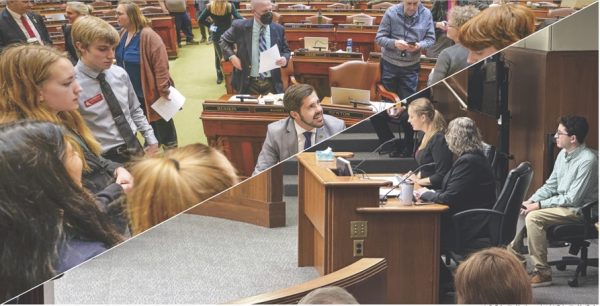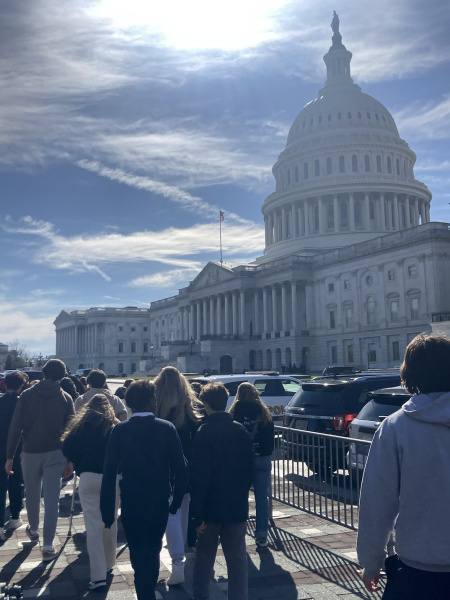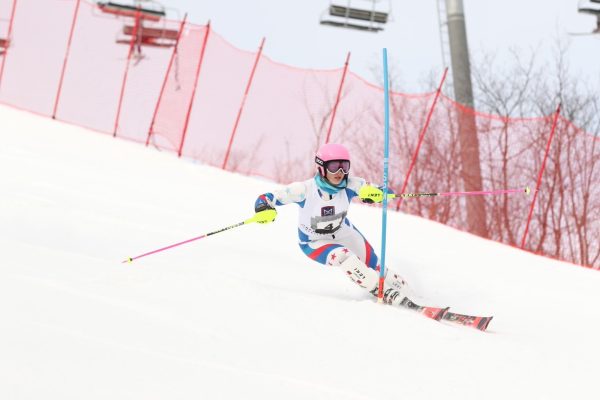Baroody, Molter Transition Departments: Continue to Draw Interdisciplinary Connections
Teachers return to their roots in new roles
Next year, Michelle Baroody will be moving from the Social Studies department to the English department, and Maggie Molter will be moving from the Math department to the Science department to teach physics.
As she enters a new department, Baroody recalls what caused her to join the Social Studies department in the first place. “[I] went to grad school at the [University of Minnesota], and I was interested in continuing to teach in the Twin Cities,” she says. Baroody majored in English and Philosophy at the undergraduate level and has a graduate degree in Comparative Literature and Cultural Studies. She continues, “I was interested in checking out independent schools and there was a social studies job, and I looked at the classes in the department and I thought that this would align with a lot of the stuff that I studied and did.”
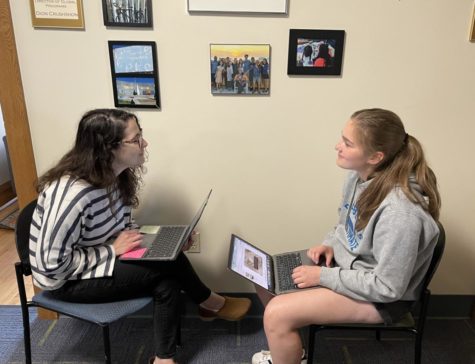
a banned book for U.S. History: Land, Property, and Wealth. (Yoni Zacks)
Baroody shares that when she taught classes at the University of Minnesota, she had a class called Reading History: Theory and Practice, where she instructed the process of reading and writing history. Baroody uses her background in literature when teaching social studies as she uses literature to frame historical discussions. For example, in the Land, Property, and Wealth class, she used the novel “Grapes of Wrath” to discuss “what was happening in the US during the 20th century.” She also notes that she asks her students to “do close readings in her classes that other teachers in social studies don’t push as much.”
Furthermore, Baroody prizes interdisciplinary work in her classes as she thinks fondly of the way that the ninth-grade curriculum “blends [social studies and literature] together, and that’s where I sit in terms of my own discipline and study.” Baroody plans to carry the idea of thinking outside the box. She notes that she wants to read “nonfiction as literature and ask the questions of what makes literary texts literary, and what does it mean to use the methods that we use in English class to look at other kinds of materials.”
Baroody will teach her Film Analysis class where she plans to collaborate with the film-making class and discuss aspects of film analysis while making film. She is also excited to teach Science and Speculative Fiction, which will challenge readers’ view of what is possible.
When discussing her shift, Molter notes that she “studied physics in college,” and that “science was always [my] first love but [I] also love teaching math.” She originally fell in love with physics because of “how many things physics touches in society, like math and super applied things in technology.” She has had experience teaching physics, math, and even chemistry in the past, oftentimes teaching all at the same time.
Molter addresses how she incorporates physics elements into her current math classes, noting she tries to “bring the hands-on elements into the classroom,” and explains how “some of [her] favorite parts of teaching Algebra II is doing mathematical modeling and data analysis because that’s the more applied side of math which relates to physics.”
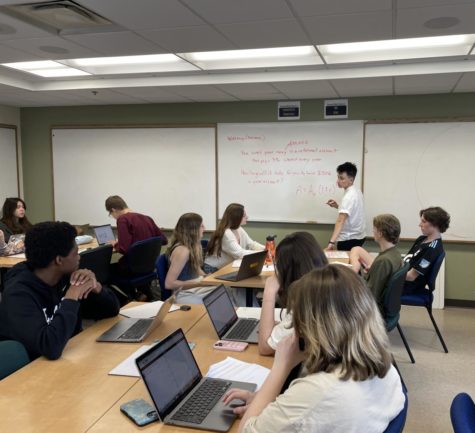
By knowing the language that is used in the math classroom, Molter will be able to “use parallel language for physics to help students learn and understand the material.” Because physics is inherently tied to math Molter explains, “There is value in having a 15-minute mini-lesson in physics that relates to concepts you learn in math that you can recognize.”
Molter is most excited to teach “mechanics stuff of just like collecting data, carts on ramps, and forces,” and in the future, she would love to teach an elective like “astronomy… a climate change elective would [be] cool, and anything interdisciplinary that connects physics with chemistry, math, and even space.” Her goal is to “make students excited about the subject. I’m teaching by relating it to things they like and that they have in their life.”
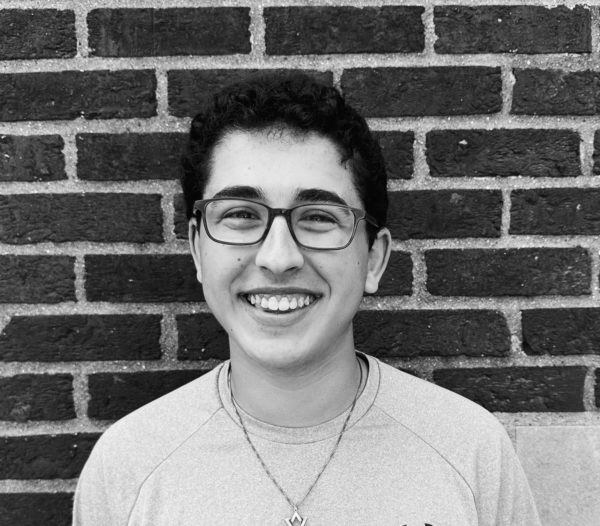
Hi! My name is Yoni Zacks, and I am a junior. I am a Co-Editor-in-Chief and the Online Editor. I also edit the front and opinion pages. I have been writing...











